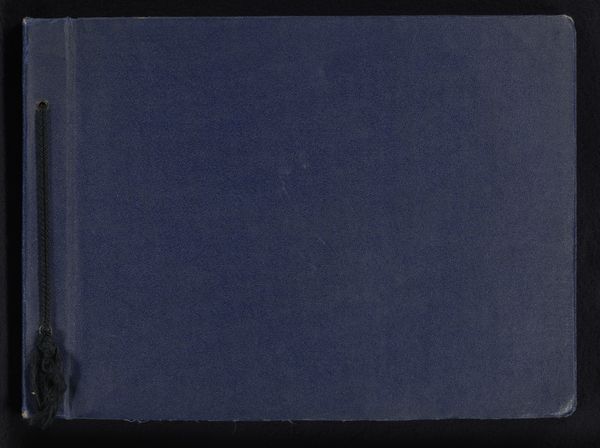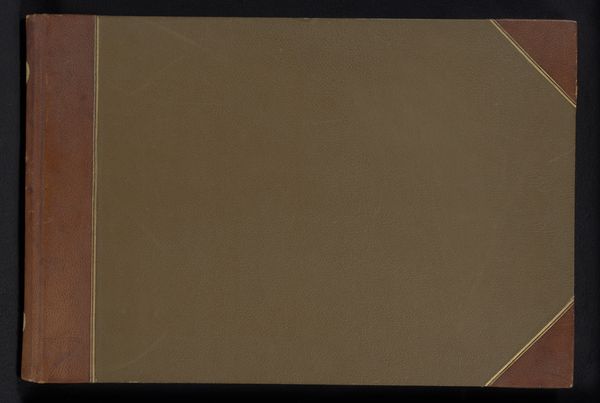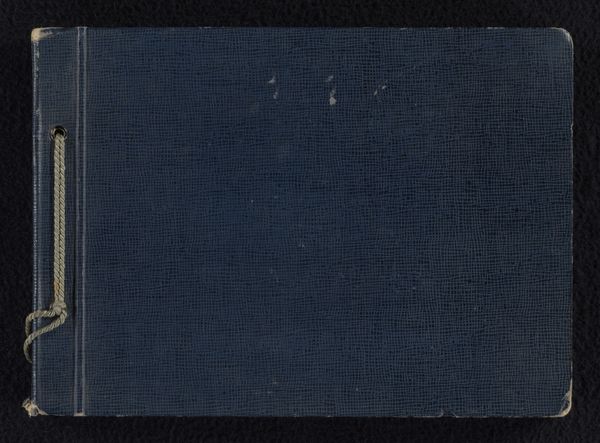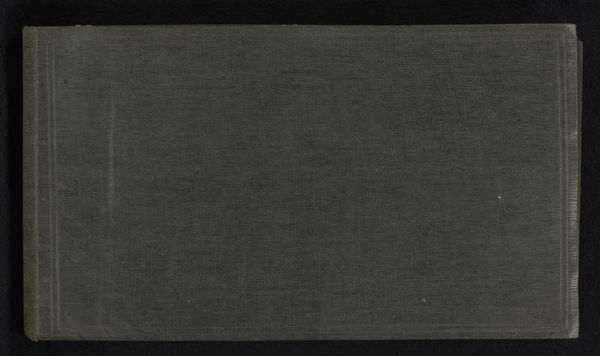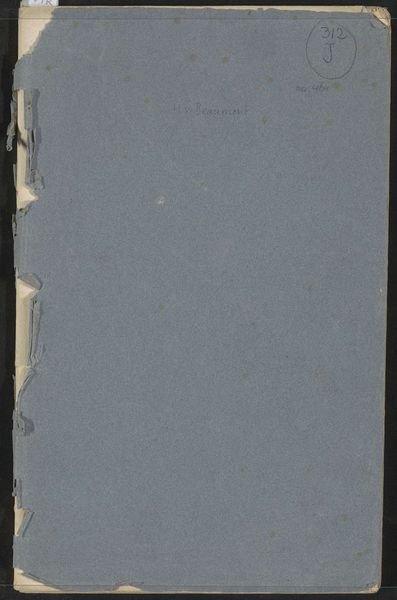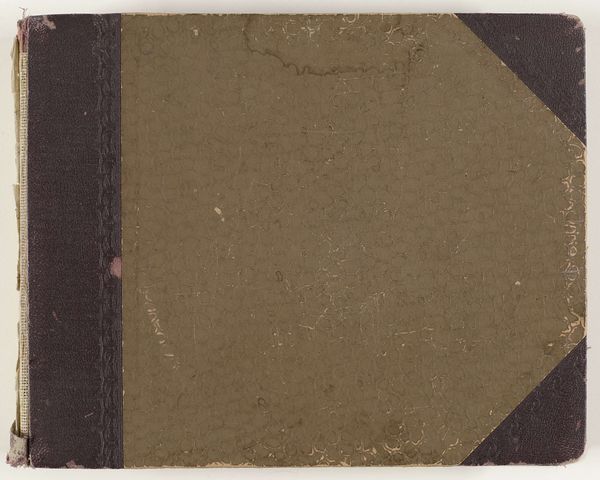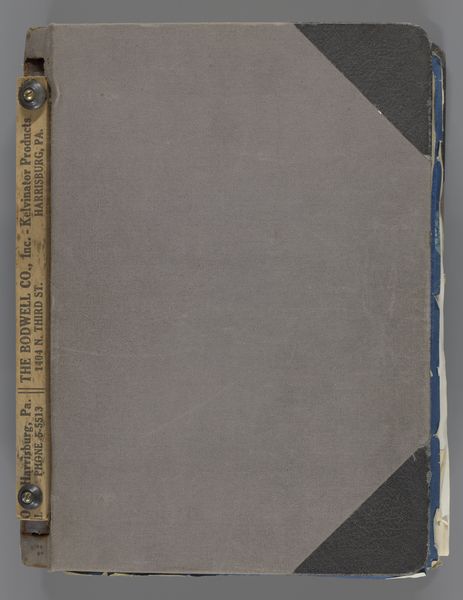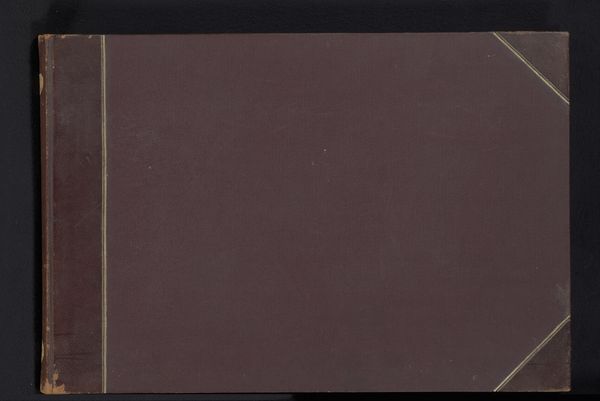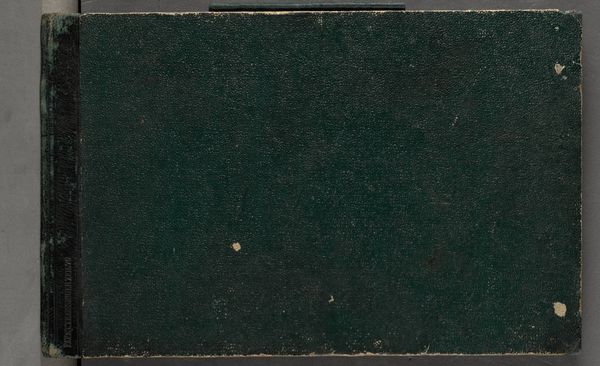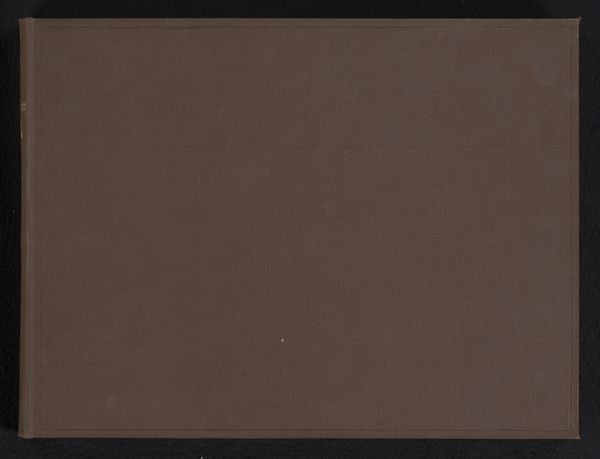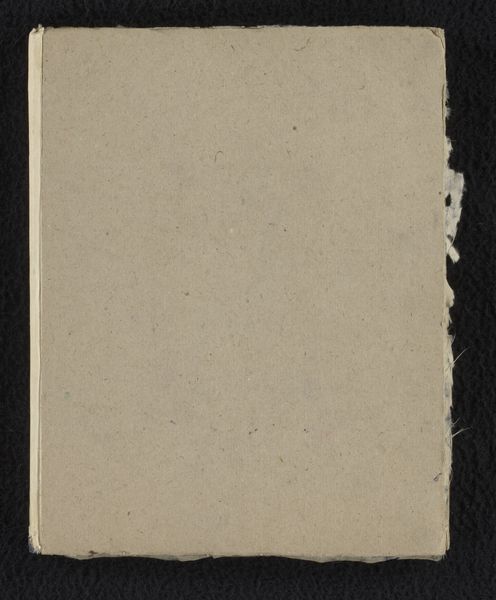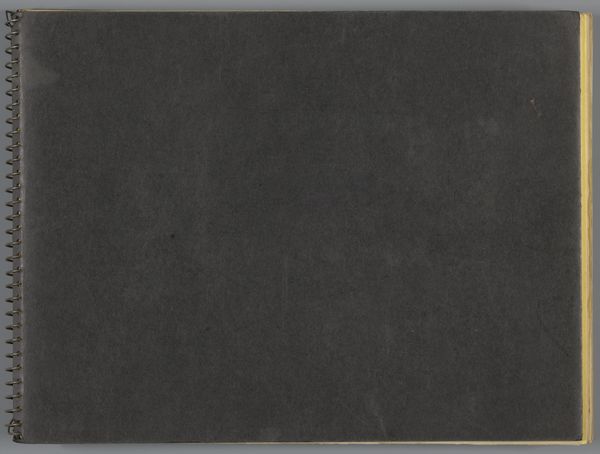
Verwoestingen van Nederlandse steden en infrastructuur in het begin van de Tweede Wereldoorlog 1940
0:00
0:00
mixed-media, photography
#
mixed-media
#
still-life-photography
#
book
#
photography
Dimensions: height 250 mm, width 365 mm, width 650 mm, thickness 32 mm
Copyright: Rijks Museum: Open Domain
Curator: Here, we see what appears to be a solemn archive, a still-life photograph of a mixed-media piece created in 1940 by Arnoldus Vrauwdêunt, bearing the stark title "Verwoestingen van Nederlandse steden en infrastructuur in het begin van de Tweede Wereldoorlog"—Destruction of Dutch Cities and Infrastructure at the Beginning of World War II. Editor: The object gives a distinct feeling, at first sight; somber elegance comes to mind. The book binding with dark, tactile skin evokes a sense of contained memory or grief. Almost like a gravestone. What else strikes you about it? Curator: That tactility you mention is critical. Consider the binding itself. The visible cord suggests fragility, impermanence, which stands in stark contrast to the usual solidity we associate with historical documents and memory. It immediately hints at a story yearning to be told. One which, potentially, many wish to be forgotten. The darkness reminds me, in many ways, of the political forces consuming the country during this period. Editor: Absolutely. And to place this artifact within its context, consider the very Dutch cities devastated during the Blitzkrieg, infrastructures upturned… it’s about more than buildings. It’s about dismantling communities, the targeted erasure of cultural identity. Is it a historical document or evidence? A memorial? How do you find beauty amid devastation? Curator: Maybe there’s beauty in resistance and the creation of shared memory. The book, although seemingly subdued, radiates some light between the textures and gentle lines of the piece. The beauty comes from creating such a heavy piece in such a subtle medium and with incredible historical context, to keep the record alive through imagery and binding. Is the artist trying to create hope, or is he simply presenting history and events as they are? Editor: Or, more to the point, what constitutes hope in the face of utter destruction? Vrauwdêunt’s work prompts us to question hope that overlooks necessary reckoning and the importance of the collective. I am fascinated by how this photograph demands we ask those questions. Curator: Precisely. This work serves as a quiet reminder that looking backward—even at the most difficult chapters—can be an act of profound bravery, a testament to the human spirit's enduring power, perhaps our moral imperative to pay respects to the history of those we displaced in times of trouble.
Comments
No comments
Be the first to comment and join the conversation on the ultimate creative platform.
